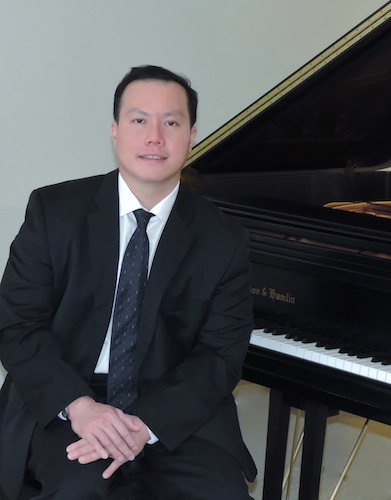Sia piano recital shows the pitfalls of self-presentation at Carnegie

Jason Sia performed a piano recital Thursday night at Carnegie Hall.
Pianist Jason Sia, a busy and well-respected performer and pedagogue in the Sacramento area, presented his own concert at Carnegie’s Weill Recital Hall Thursday night. On the basis of this first exposure, it was impossible to see the qualities in his playing that others clearly have heard.
Sia played a scattering of over a dozen excerpts from larger works (and a few standalone pieces), with Chopin, Liszt, Gershwin, and Debussy represented multiple times. Things like a Chopin Nocturne, “Ondine” from Gaspard de la nuit, Earl Wild’s Etudes from Gershwin songs, and the Hungarian Rhapsody No. 2, added up to a concert meant to show off Sia’s pianism.
The goal and means turned out to be flawed in two ways. The first was that Sia wasn’t technically able to perform the music successfully; the second was that the program left little space for deeper artistry. But that also pointed to an additional problem, that Sia only occasionally showed any noticeable musicality—perhaps because he struggled so much with the notes.
From the first bars of Chopin’s Nocturne in D- flat major, Op. 27, No. 2, Sia’s problems were apparent. His sense of rhythm was brittle. He played the Nocturne with rubato but it was haphazard and uncentered. Rubato, especially in Chopin, should set up a sense of anticipation and suspense, the listener should be able to see the arc that will bring the hands back in synchronization with the tempo, the other shoe that adds satisfying expression.
Sia’s playing was so chaotic that one had no idea where his rubato was heading, nor even what the basic pulse was–it was suspenseful in the wrong way, like being a passenger on a bus with the driver drunk. His phrasing was almost nonexistent, just notes dropped in here or there with no connective tissue. This blank style was appalling in Liszt’s arrangement of Schubert’s Ave Maria, which came off as leaden. His dynamic range was mostly mezzo-forte to forte–meaning no piano in “Ondine,” and no atmosphere or drama.
And his hands were just plain bad. He, weirdly, played the outer two movements of Beethoven’s “Moonlight” sonata, and along with his inability to stitch together the line in the first movement, the rapid passages in the finale were a mess, as was everything else at a rapid pace Thursday.
He followed the Hungarian Rhapsody with the conclusion of Rhapsody in Blue, and both were incoherent, sounding like a random conglomeration of notes rather than purposely notated scores.
The rhapsodies came on the second half, which had the only acceptable performances—a calm Intermezzo, Op. 118, No. 2 from Brahms, Liszt’s arrangement of the “Liebestod” from Tristan und Isolde, and the concluding “Claire de Lune.” In these, Sia showed some idea of how he wanted the music to sound, rather than just stumbling and weaving from bar to bar.